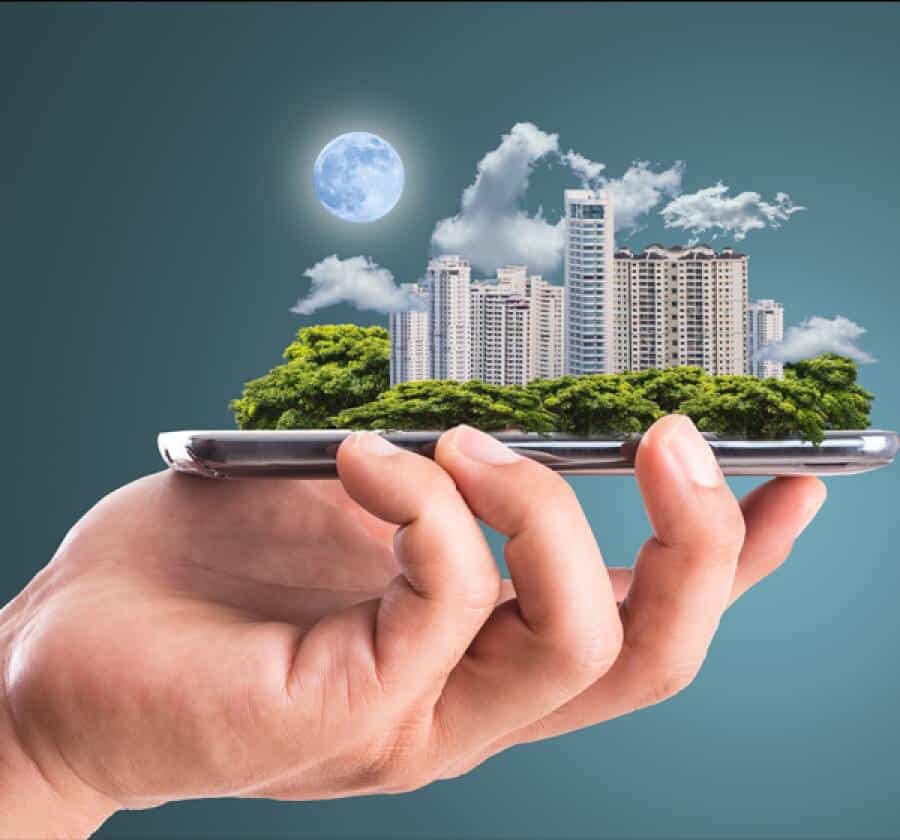Nobody wants to be considered stupid, and smart citizens want to live in smart towns. In the world of technology, a new challenge is on the menu: how to make cities smarter by infusing intelligence and making use of the internet in everything they do. It is not only about being innovative and digital, but also about ensuring a high standard of quality of life and making cities green.
The objectives of integrating technology and communication into urban ecosystems are simply to ensure the wellbeing of their inhabitants; to diminish congestion and pollution, to adopt low-carbon solutions, to modernize lighting and minimize energy consumption, or to integrate new infrastructure networks.
The cities of tomorrow are described as smart and sustainable. However, the work required to get to a win-win situation goes well beyond hand clapping. There is a need for city analyses, case studies, and business surveys as well as mapping current practices and introducing innovative forms of city policies. The commitment must not be limited to city hall but must include the citizens themselves, which means that the tools for community engagement should be available for large scale implementation.
To get from concept to practice, the road may be long and hard. It is time, however, to make changes for the half of the world’s population which is living in urban areas. By 2025, it is estimated that there will be 88 smart cities in the world. There are cities which have already taken a few steps forward and have catalyzed intelligent progress by integrating technology into citizens’ daily lives as we are going to see in the cities most frequently categorized as smart.
- Barcelona – Where beauty matches intelligence
Barcelona has the distinction of launching, in 2011, the 4Ps strategy: Place (city), People (citizens), Private (business), and Public (administrative). The city manages a portfolio of 25 smart cities projects, and in practice the Barcelonians are enjoying multiple apps for smart parking technology, and sensors to monitor and manage traffic or to analyse air quality. The sustainable city also adopts smart lighting and undertakes to install Wi-Fi in public spaces on a large scale.
- Singapore – Big data at the service of city policies
Traffic is the leitmotif on the island. The open data platform of the Lion City is massively used to clear traffic; and road sensors and cameras are deployed to monitor parking and to reduce congestion in transportation. The authorities are also working on broadband availability; the purpose is to make available a 10-Gbps fiber broadband service. If you are a tourist in Singapore, be aware that you risk being detected if you’re smoking in unauthorized places or if you throw away your cigarette.
- San Francisco – Tech boom rhymes with sustainability
San Francisco is not only an urban tech hub, but also a pioneer city with one of the highest incidences of green buildings – called LEED-certified buildings (Leadership in Energy and Environmental Design). Many efforts are also underway to improve transportation, and the city is considering an impeccable payment system (online and contactless payment) for public services.
- London – Interconnectivity at the highest level
The so-called city of dreams is also an icity of broadband availability. You might also want to know that London has the largest free Wi-Fi network in Europe after a partnership recently concluded between the authorities and a network operator. Smart London is bringing together people, technology, and data to innovate, for instance, in terms of transport (recognition of congested areas) or to reuse waste heat. The city is also doing very well regarding the open data platform (London Datastore), which helps to develop solutions to the megalopolis’s problems, mainly through various apps.
- New York – Smart up to the skyscrapers
New York’s approach is that a smart city is an equitable city. LinkNYC is one of the largest networks of Wi-Fi hotspots, which cover more than 7,500 public hubs. As the city is facing security challenges, the police have developed a system of awareness which works as a documented database of reports on police controls. The police cars are also tracked by video camera. Among other smart initiatives, we can mention a project to monitor air pollutants, real-time information about traffic, or sensors helping to reduce the city’s greenhouse gas emissions.
The above smart cities are not alone. It is fair to mention that top marks are constantly changing as new cities adopt new technologies or others stop at a certain level of smartness. However, in order to be innovative, it is essential to bring together a range of actors and key stakeholders so the city’s commitment can be a guarantee for implementing smart policies. An urban metamorphosis based on technology can add value and improve the wellbeing of everyone. The tactical matters needed to bridge the gaps are waiting somewhere to be adopted in every single city.
Support us!
All your donations will be used to pay the magazine’s journalists and to support the ongoing costs of maintaining the site.
Share this post
Interested in co-operating with us?
We are open to co-operation from writers and businesses alike. You can reach us on our email at cooperations@youthtimemag.com/magazine@youthtimemag.com and we will get back to you as quick as we can.









